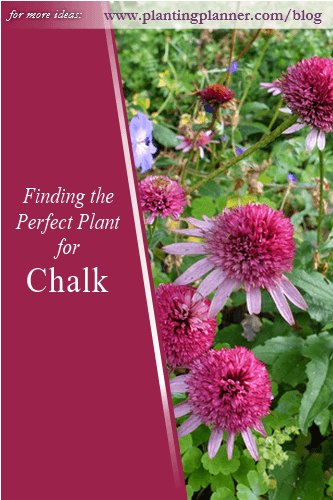from The Weatherstaff PlantingPlanner – intelligent garden design software
Need a Planting Plan for a Chalky Garden? Click here
Some plants are particularly versatile and unfussy, making themselves at home and seeming to thrive wherever they come to rest. Most plants however have a preference for a particular set of growing conditions or cannot cope if the temperature gets too high or the water supply too low. Keen gardeners may relish the challenge of coaxing a particular favourite plant to prosper, but if you don’t have the time to lovingly cosset your choice specimens, getting the plants in the right place to start with is the way to go.
Plants for Chalky Soil
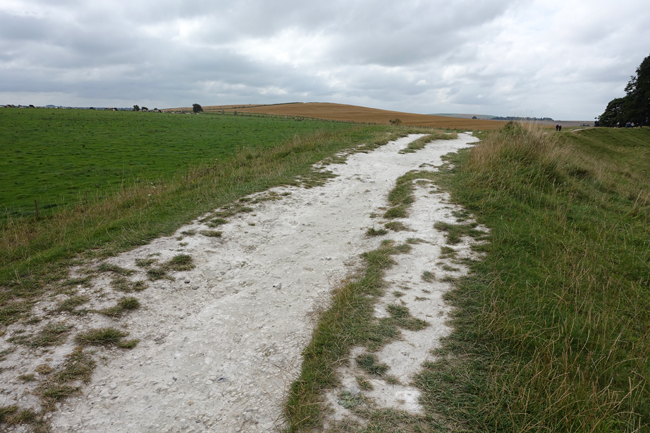
If your garden has chalky soil, your plants need to be able to cope with its very free-draining, nutrient-poor, alkaline conditions. (Soils rich in limestone share the same characteristics.) Chalk formed at the bottom of shallow seas 60 million or more years ago from seashells and skeletons of sea creatures. These were mainly tiny plankton but you may be lucky enough to find the odd ammonite fossil lurking in a lump of chalk when digging up your garden beds.
How do you know if you have chalky soil?
Chalky soil is usually whitish in colour. You may even see lumps of chalky, white stones in your garden beds and sometimes sharp flints embedded in the chalk.
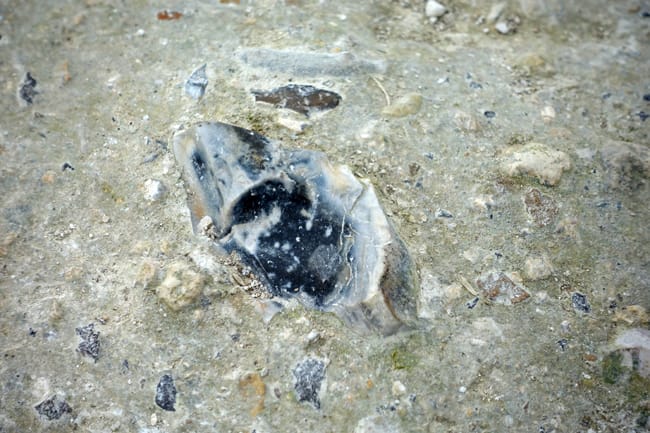
Chalky soils are very alkaline and have a pH of 7.1 or above. You can use a soil-testing kit, bought from garden centres or online, to check the pH level of your soil. You could also try putting a spoonful of soil in a jam jar of vinegar. Chalk is made of calcium carbonate and will cause the vinegar to froth up.
Acid-loving plants like rhododendrons, camellias and blueberries, will not grow in these conditions. If you are keen to grow these, you’ll need to buy bags of ericaceous soil and plant them up in pots.
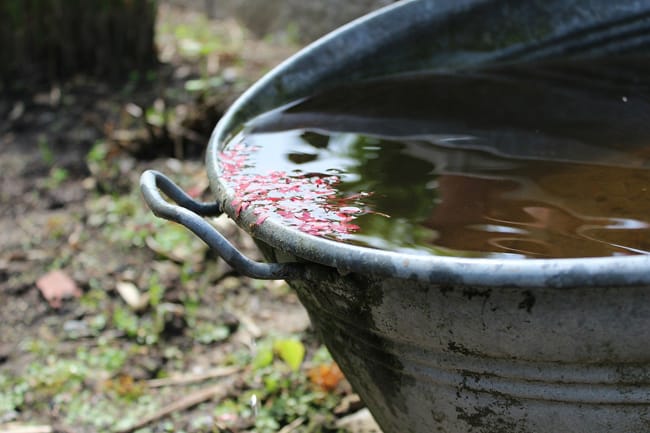
Tap water in chalky areas is usually alkaline too, so it’s best to collect rainwater to water acid-loving plants.
How deep is the topsoil in your garden?
Not all chalky soils are alike.
The depth of soil above the chalk layer varies. Deeper soils can hold more water and, if your soil also contains clay, nutrient levels will be higher. Shallow soils are particularly free-draining and will be low in nutrients. If you have very little planting depth before your spade hits solid chalk, it’s best to increase the depth if you can by adding more topsoil.
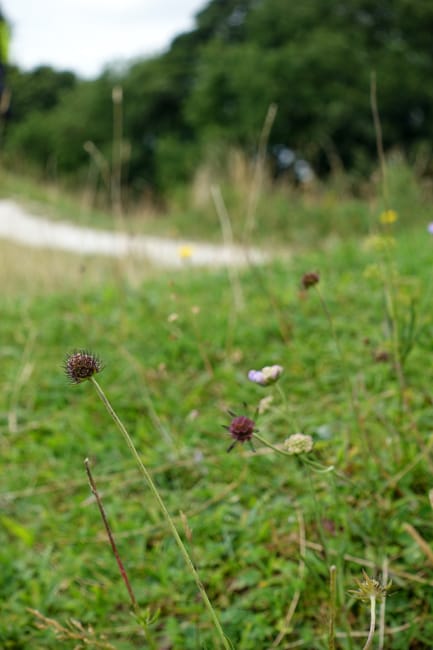
The chalk Downland tracks of southeast England are bordered by swathes of grasses and wildflowers – resilient plants well-suited to the tough conditions on the chalk grassland. If your topsoil is particularly shallow, look to the wildflowers growing naturally around you for inspiration.
Choosing plants
For garden beds, it is best to choose plants which are going to thrive in the conditions you have and fortunately there are lots of plants to choose from.
Mediterranean plants, including lavender and rosemary, love sunny gardens and can cope well with little rain, so they are a good choice for freely-draining chalk soils.
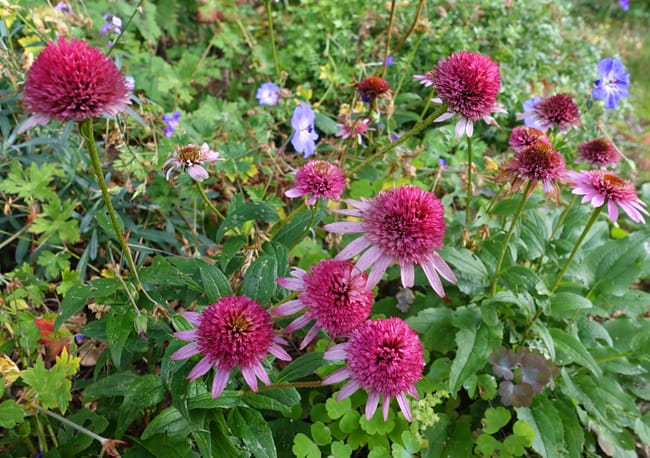
Plants from the American prairies such as Rudbeckia and Echinacea also do well.
Finally, look around at the wild-flowers growing in your area. Wildflowers, such as achillea, centaurea, scabiosa and red campion, thrive even on very thin layers of soil over chalk so are guaranteed to succeed in your garden.
A wide range of plants are lime-tolerant i.e. they can cope well with alkaline conditions. For very free-draining soil, it’s best to choose plants which are drought tolerant as well, if you don’t want to become a slave to the watering can.
Tips for growing on chalky soil
- Mulch plants with organic matter when planting and then annually to help conserve moisture and provide nutrients for your plants.
- Water plants regularly until they are well-established. Even drought-tolerant plants need to get settled in well before being left to fend for themselves.
- Start with smaller plants if possible which will have a lower demand for water and nutrients than larger ones.
Pin for later
For more gardening ideas, click here to follow the Weatherstaff PlantingPlanner on Pinterest.


